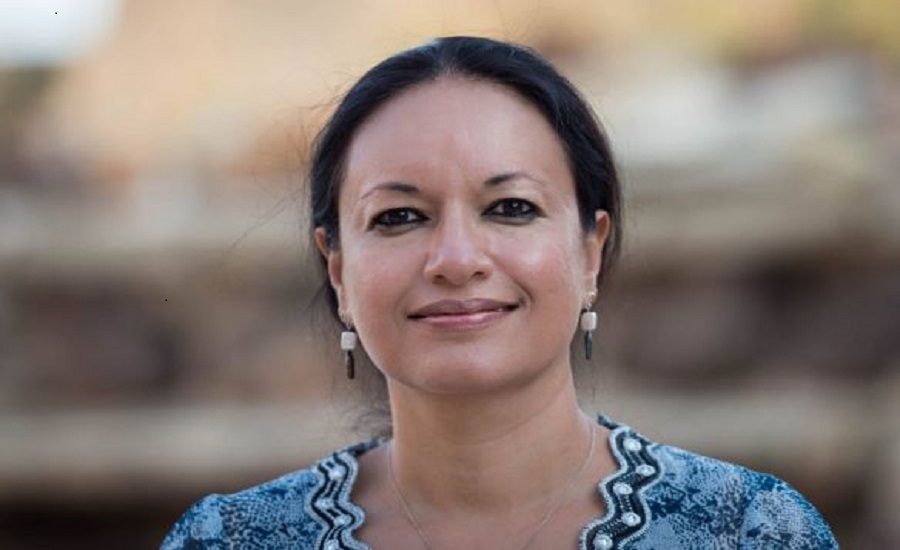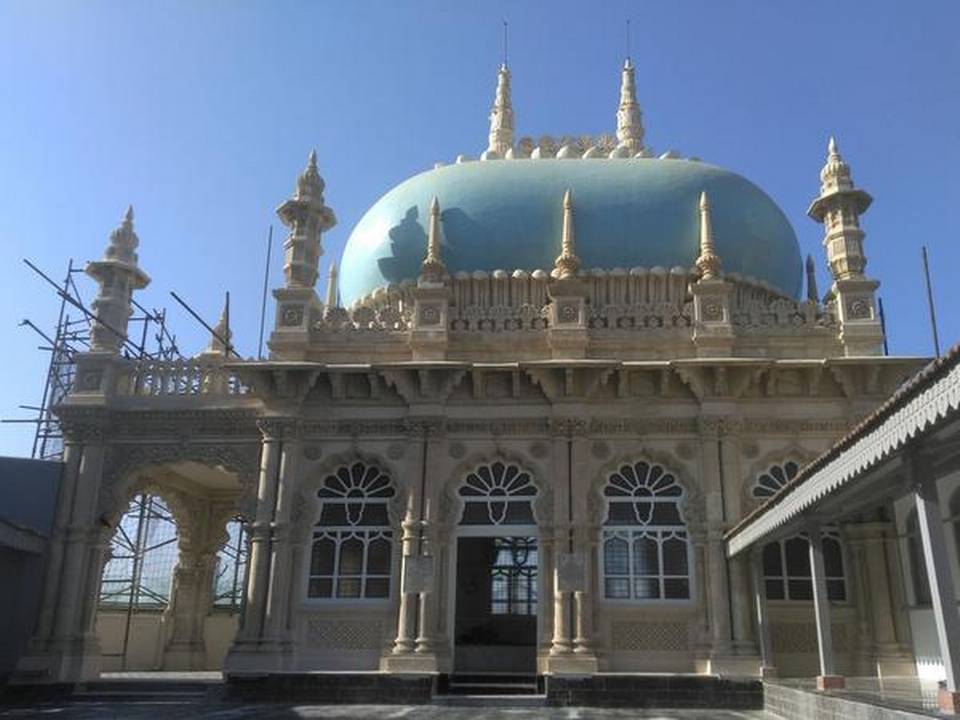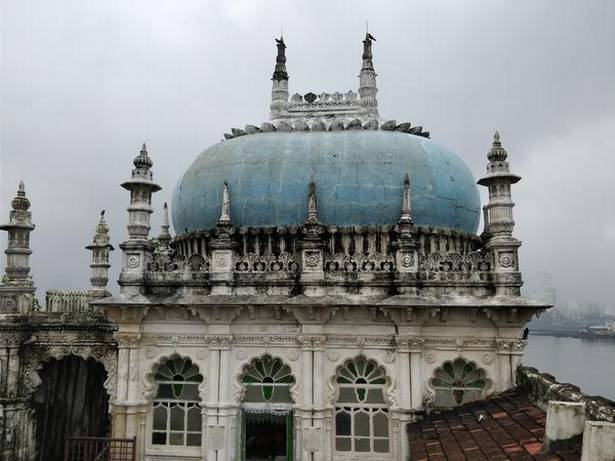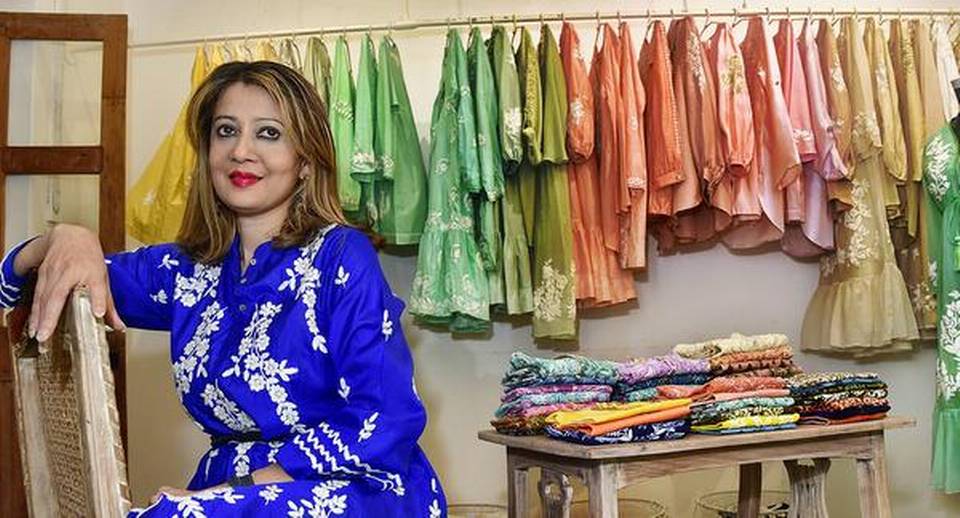Marehra City (Etah District), UTTAR PRADESH :
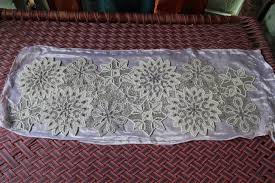
Rifat Bano (30) sits on the brick floor of her home in Marehra, Etah, chatting with her sister Sabina and their two nieces. Between them is a snow-white satin cloth stretched tautly on a rectangular wooden frame.
Her hands move at a habitual pace: one places an index-finger-length hooked needle, filled with white and silver beads, on a specific point in the cloth panel. As the needle goes through the cloth, the hand underneath guides a plastic wire to latch onto the needle’s hooked tip, which pierces the cloth. As the needle withdraws, it stitches the bead onto the cloth.
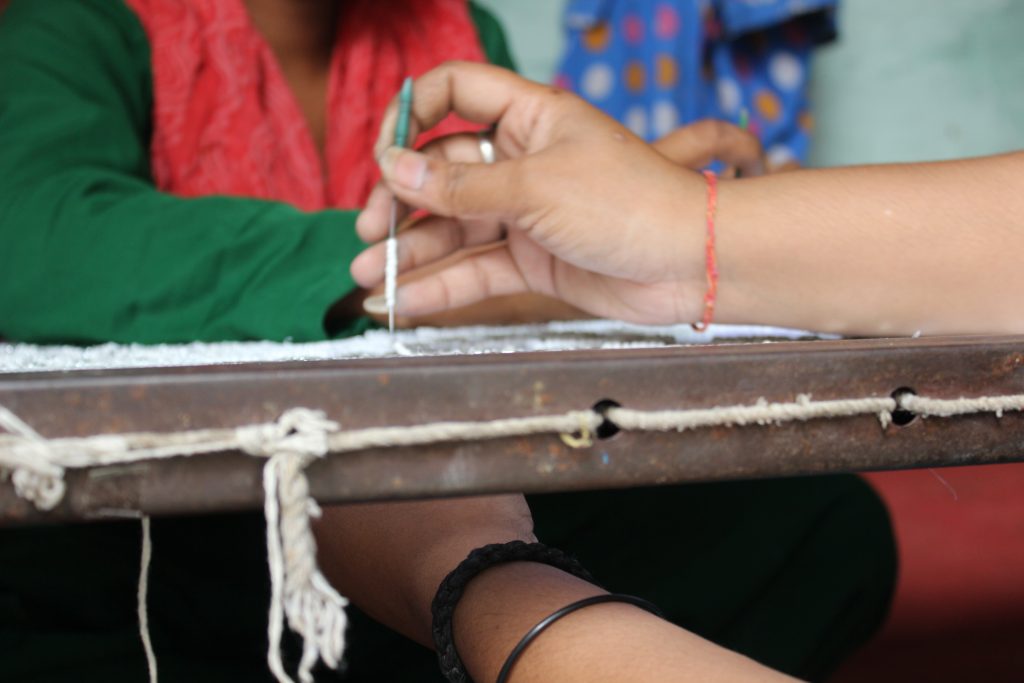
This is Karchobi ka kaam or Karchobi work, a style of beaded embroidery that, according to noted historian Professor Irfan Habib, is an import from Iran that came to India around the 17th century.
A more commercialized form of this craft was introduced in Marehra about 20-25 years ago by a man named Ajmeri. Embroiderers says that Ajmeri had relatives in Sikandra Rao and learned the work there and then brought it to Marehra, where he was from.
He first trained his wife, who then trained women in her predominantly Muslim neighbourhood, which is the reason that even today the majority of embroiderers in Marehra are Muslim women.
About 700-800 women are now employed in the Karchobi industry in Marehra, says Matsyanath Trivedi, the Block Development Officer. It is now more widespread in Marehra than Sikandra Rao, so that Rifat Bano says, “Marehra mein aisa koi ghar nahi milega aap ko jahaan Karchobi ka kaam nahi hota ho – You won’t find a single house in Marehra where Karchobi work is not being done.”
She herself started doing Karchobi embroidery when she was just 9 years old. Her family was against it, as it strains the eyes but she went ahead and learned it, in secret.
Three years later, when her father, a fruit seller, died, she had to continue this work to support her family, eventually becoming the primary breadwinner. “Pehle shauq tha, phir shauq majboori ban gayee (At first it was my interest but then it became my necessity),” she says.
Setting it up
All embroiderers have to go through a set of preparatory steps before starting on the embroidery process. First, they mount the fabric on the karchob.
Irfan Habib, in a 1973 paper titled “Indian Textile Industry in the 17th Century”, wrote that in Persian, “kar-chob” refers to “the wooden frame” that holds “the fabric taut, when [it is] being embroidered.”
The more popular Zardozi is also done on a karchob. However, while Zardozi exclusively uses silver or gold thread, Karchobi embroidery also makes use of cotton, wool, and silk threads points out Professor Ishrat Alam at the Department of History in Aligarh Muslim University (AMU), whose research focuses on the textile industry in medieval India.
Noor (21), who has been an embroiderer for the last 4-5 years, says that the quality of the embroidery improves if the cloth panel is stretched as tightly as possible across the frame.
Next, a paper stencil of the design is placed on top of the mounted fabric and a paste made of chalk powder and kerosene is rubbed on it with a cotton rag.
The design gets imprinted on the fabric as do the embroidery instructions. These are numbers that correspond to a bead’s colour and tell an embroiderer where to place a particular coloured bead.
For instance, Noor can be seen embroidering red beads where it says “3”. This means that the number “3” corresponds to red-coloured beads; similarly where it says “2”, she has to embroider golden beads, as in the image below.
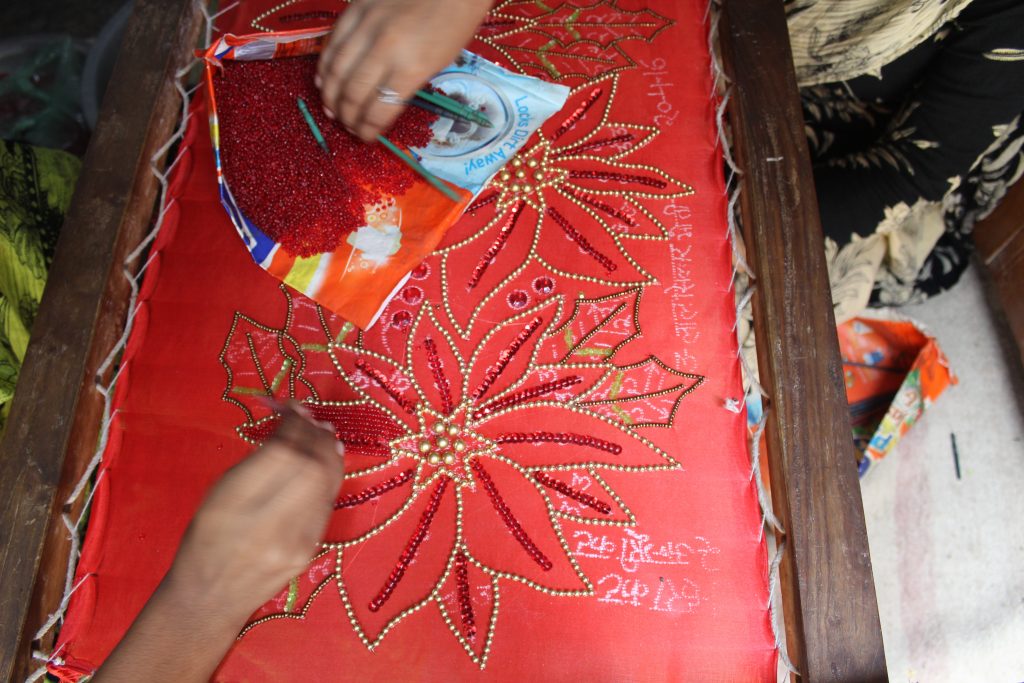
A single design usually requires the use of beads of several different colours and an embroiderer has to be careful to use the right-coloured beads, says Khalida Begum. It is only then that the embroidery work begins.
Rifat Bano says that she is able to embroider about two pieces a day but it also depends on the design. A complex design can take longer, such as the Day of the Dead panel that took sisters Zehra Fatima (21) and Aisha Fatima (23) two days to complete.
The Day of the Dead or Dias de los Muertos is a two-day Mexican celebration of remembering deceased family members and is celebrated by people of Mexican heritage throughout the work, including the US.
Their panel used Day of the Dead motifs such as skulls and flowers that required the use of different shades of blue, orange and red beads, totalling 14 different coloured beads.
Wages and health
Considering the intricate nature of the work, Aisha said that they should be getting paid at least Rs. 200 for this panel, instead of Rs. 140 that they were going to earn: “Kaam ko dekho to kaam ismein ek ek sui ka hai. Hame sasta lag raha hai ye,” (If you look at the work, this requires the use of one needle per stitch. We think the wages are low.)
It’s not just Aisha; all the embroiderers that I spoke to said that their wages were low and did not reflect the intensity of their labour.
The state government has not stipulated the minimum wages for Karchobi embroiderers. However, the minimum wage in Uttar Pradesh for the handloom industry, specifically for Zari embroidery is Rs. 5750 for unskilled, Rs. 6325 for semi-skilled, and Rs. 7085 for skilled workers.
All the embroiderers who this reporter spoke to had been doing this work for at least four years and some had been doing it for over a decade. They were all at least semi-skilled workers. But even in the best-case scenario, where they earned Rs 200 a day, their monthly income did not exceed Rs 6000, which is less than the stipulated monthly minimum wage.
Khalida Begum has been working as an embroiderer for more than 20 years. She says that in fact, her income has decreased from what she earned seven to eight years ago, as more women have taken up Karchobi work. With a large workforce and limited work, the embroiderers have lost their bargaining power.
Rifat Bano says, “Agar ham karte hain to theek hain, nahin karte hain to theek hain. Ek hamare band karne se koi pharak bhee nahin padega”–If we do this work, it’s fine, if we don’t do it, that’s also fine. It won’t make a difference if we decide not to do it).
Karchobi embroidery also takes a toll on the embroiderers’ health.
Back in Rifat Bano’s home, her and other embroiderers joke about gaining weight around the stomach from sitting all day. One person is especially called out and they burst out laughing.
They say that their eyes hurt from embroidering. And what about your fingers, I ask. “Gosht laati hai saath mein–(the needle) brings back flesh (when it comes out),” says Noor. Rifat Bano points to deep red bloodstains on the floor next to her where she has shaken off blood from her index finger.
pix 06
Noor, going back to the discussion about weight gain, says that if you leave Marehra, and therefore Karchobi, for 15 days, you can get back to your real size. Her elder sister, Farha, agrees and says that she only lost weight after she got married and moved out of Marehra.
Then Noor announces that she is only going to do Karchobi embroidery for 10 more years.
“Phir kya karegee?–Then what will you do?” asks Rifat Bano.
Noor retorts: “Kuch na karoongee. Kuch India mein dimagh lagaoongee main to.” (Nothing I’ll do. I’ll give some of my attention to India.)
The names of all the embroiderers have been changed to protect their identities. Some of them specifically requested it. They said that talking about their wages and problems with their work could lead to them being singled out by their communities. This reporter decided to change all their names as a result. The companies too have not been named as she felt that it could pose a threat to these women’s livelihoods.
All images by the author.
Meher Ali is an independent journalist based in Aligarh. She reports on refugee, human rights, and social justice issues. She also blogs about the cultural heritage of Aligarh and its surrounding areas.
source: http://www.twocircles.net / TwoCircles.net / Home> Indian Muslim> Lead Story / by Meher Ali / May 12th, 2019






